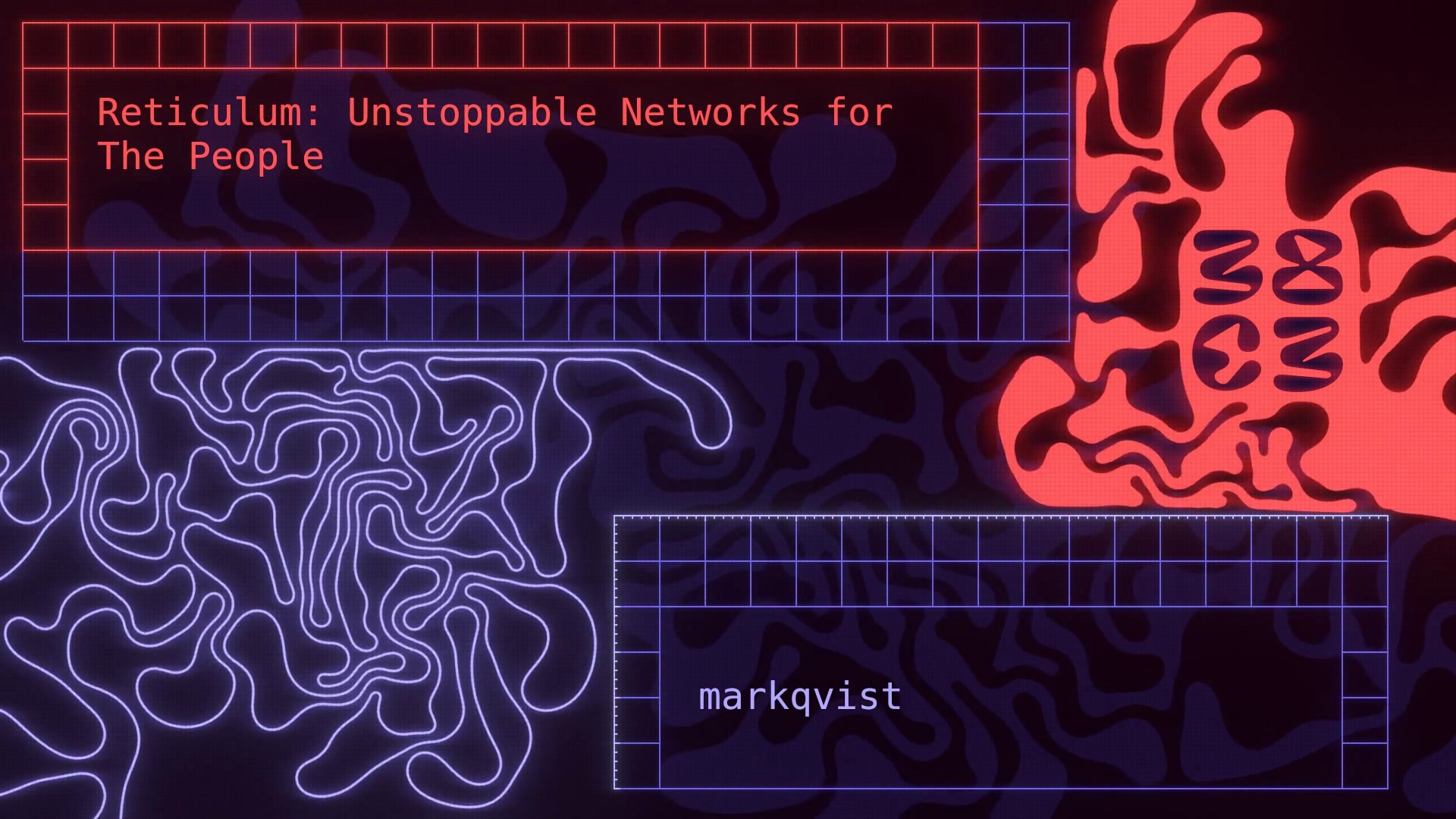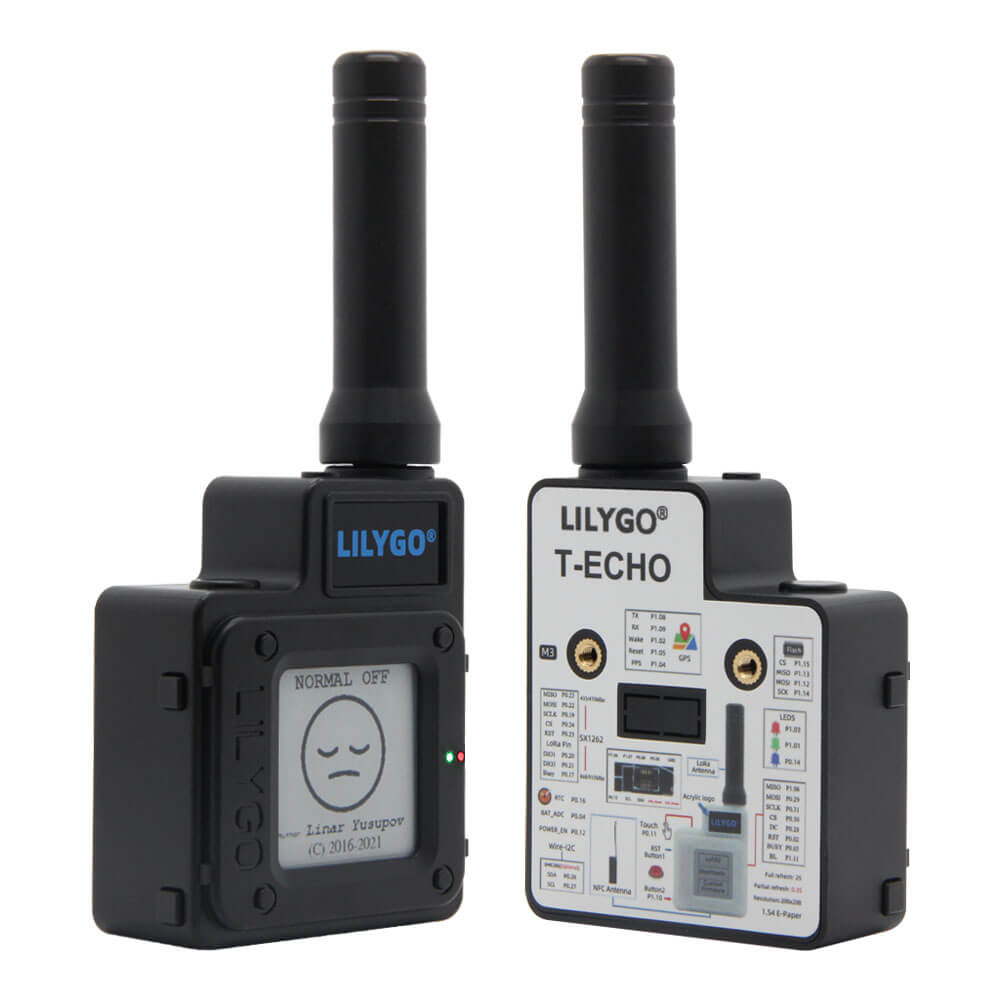@geep Yep Guifi is great, similar to Freifunk and Melbourne Wireless (year 2000).. Guifi was active when I lived in Spain. Just better suited to very dense urban environments (like Barcelona) as WiFi has such a short throw/reach. Also, few nodes are on battery, nor portable, compared to LoRa which is generally the case. LoRa has a far greater reach with much lower power demand than WiFi meshes, and many nodes are built to be carried in pocket or bag. LoRa IMO is more blackout ready.
@JulianOliver Hey! Meshtastic looks amazing. But the docs are a bit technical for me. Could this be used for, say, emergency off grid communications? I wonder if there is a good getting started guide for neighborhoods without technical background in radios and networking. Thanks!
@scott I teach disaster resilience in a communications context & Meshtastic is ideal. For a daily carry, I recommend a T-Echo or Sensecap T1000. You want an Android device, running the Meshtastic app. Typical setup flow is: with the app loaded, you search for the node as a Bluetooth device. The device presents the BT key on screen (or refer to packaging), which you enter in the app. Then, look online for your local Meshtastic community and request a QR code to scan using app to join local mesh.
@scott Henceforth, you effectively use the node as a sort of cell tower replacement for texts (whether DMs, public and user-defined private channels) to other phones whose paired nodes are on the same mesh. Moreso, nodes are each routers in their own right, carrying messages for others even when not in active use by their operator.
@JulianOliver liked the explanation. Where can I find something like a dummies tutorial how to setup a node (don't even know if that's the name).
Basically I want to setup something that can be solar powered, self sufficient and provides a way to stay connected to some kind of network on situations like the past Monday. @scott
@PJFDF @scott I'm not sure, but consumer devices like the SenseCap T1000 walk you through via the manual they come with. In any case, they are easy to get up and running with on Android for nontechnical folk. For multi-day resilience I would not jump into a solar project. Instead, start simple. Get a T-Echo, which gives you a few days cover on batteries anyway. Then, study & skill up for solar.
FYI here is a build I made, a little more for the technically inclined:
@PJFDF @scott https://www.tinytronics.nl/en/development-boards/microcontroller-boards/with-gps/lilygo-ttgo-t-echo-nrf52840-lora-868mhz-bme280-gnss-black
For Europe, you want the 868MHz models. That is the legal radio band you can use there, and the same that your local existing mesh nodes will be using.
@JulianOliver thank you. Will see how can I get something running in my community. Will keep you posted. @scott
@PJFDF @scott note that even for that little T-Echo you can use a diversity of different antennae (any that have SMA connectors) or connecting a SMA cable to it to work with antenna mounted to roof or balcony. You can then power the T-Echo from the USB port (via USB cable) of a solar charge controller connected (by simple insulated wires) to a 12v car battery and, say, an 18v solar panel.
All to say you can start with a T-Echo now, and later build it out to an awesome solar power installation.
@PJFDF @scott
Here's a mini sketch:
A solar charge controller with USB looks like this.
Look at the icons above the wire cable ports. You would connect, say, an 18v 100W+ solar panel to the solar ports (+/-) & then your 12v LiPo battery to the battery ports (+/-). Now connect antenna to the T-Echo, plug it in to the USB port on the charge controller with USB cable, & hit power button on the node.
You now have a solar powered Meshtastic node that will run continuously even on rainy days.
@JulianOliver @PJFDF @scott Say you want to increase your local coverage in mountainous terrain, would you just buy two (home base and one mobile) and let one just run as a node or is there a need for dedicated repeaters?
@JulianOliver
great tips and pointers, thank you. love this kind of opinionated takes informed by experience.
i'd be very interested in reading what you think about reticulum. the ccc talk was very inspiring
https://media.ccc.de/v/38c3-reticulum-unstoppable-networks-for-the-people
@JulianOliver sorry the bothering (now I'm like a kids on Christmas).
When y ou say t-echo, is this what you are talking about? https://lilygo.cc/products/t-echo-lilygo?variant=44875727995061
@PJFDF Yes, but just be sure to get 868MHz version as that's for Europe. Select "Meshtastic" for firmware so that it comes pre-flashed with this. That means no fiddling, plug and play. Otherwise if you are OK to buy it from somewhere else, you can flash it yourself, and while easy can seem for a newcomer to be a bit intimidating at first.
@JulianOliver where do you teach that and how can i get a bite of it? :)
Having lived in Spain for some years I can say quite safely that any lag in adopting a community-owned-and-operated communications fallback network like Meshtastic is surely not due to lack of talent nor technical interest. I have met some of the most determined, creative and technically capable minds in Spain.
@JulianOliver Indeed, it's possible that the existence of the world-leading guifi.net reduces the perception of a need for alternatives, since it has inherent resilience - which will now no doubt increase.
@FollicleMite I think Guifi & Freifunk (& before them Melbourne Wireless) are great but inherently restricted in geographical coverage due to limitations of 802.11 RF power & throw. A few km @ 2.4GHz point-to-point vs 10's of kilometers with ease with LoRa & an omni, & days on battery. So it is that WiFi meshes are suited most to dense urban settings (like Barcelona and Berlin).
With WiFi AP's being so energy expensive, they often lean on grid power, so mesh more vuln under a blackout.
@FollicleMite Most domestic routing WiFi AP's will only get a few hundred meters LoS without amp & good directional.
But another overlooked advantage of LoRa is mobility, making use of the phones already in people's hands to text. Many people are not at home, next to their awesome HAM Yagi or WiFi mesh node, when things turn sour.
Meshtastic nodes are often found in backpacks, pockets, vehicles, schoolbags. They also allow for requesting node position to help locate loved ones in emergency.











I expect we'll start to see Spain and Portugal increase their #Meshtastic node density, post the blackouts. For two reasonably populous European nations, they have quite a low density at present.
Their neighbours to the north are already better prepared for comms in a blackout, assuming many or most of the publicly visible nodes are on battery and/or on solar.
Indeed there may be socio-economic elements at play here too that contribute to the density differences.
https://meshtastic.liamcottle.net/?lat=50.16980073505627&lng=367.20703125&zoom=6